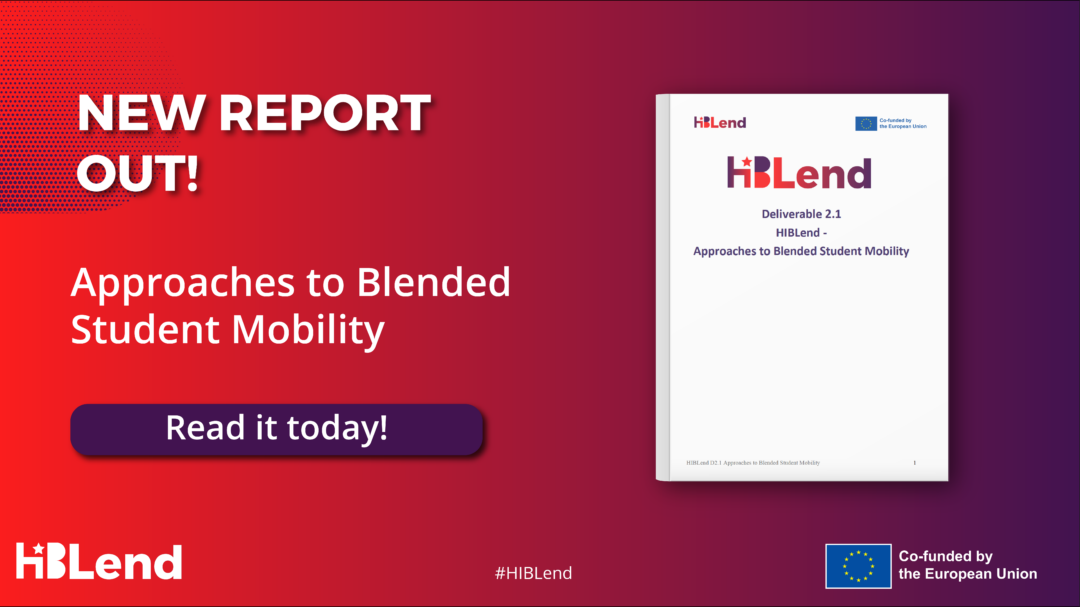The HIBLend consortium recently released its first major report, Approaches to Blended Student Mobility, offering a comprehensive analysis of Student Blended Mobility (SBM) in higher education. The report dives deep into the challenges, opportunities, and strategies for improving SBM initiatives, based on data from institutional surveys, focus groups, and hackathons with higher education professionals across Europe.
Here are some of the key findings:
Key Institutional Actors and Roles
The success of SBM programmes relies on the collaboration of various inter institutional actors. Universities that excel in SBM tend to have robust partnerships, clear communication lines, and solid technological infrastructure. International Relations Officers, academic staff, program coordinators, and IT experts all play pivotal roles. The report emphasises that a multidisciplinary approach is essential for ensuring the smooth delivery of SBM activities.
Motivations Behind Blended Mobility
Both institutions and students are increasingly drawn to SBM. For universities, SBM fits within broader internationalisation strategies, making student mobility more accessible and inclusive. For students, the flexibility and enhanced personalised learning unlocked through blended formats along with opportunities for intercultural exchange, are significant drivers of participation.
Structure and Funding
The structure of SBM generally includes a blend of virtual and physical learning components, with short-term blended mobility and Blended Intensive Programmes (BIPs) being the most common formats. While Erasmus+ is a key source of funding for SBM, the report highlights a critical funding gap for the online component, which often relies on institutional resources. This imbalance can hinder the creation of high-quality digital experiences, which are a vital part of blended mobility, as well as impede its sustainability in the long run.
Challenges and Success Factors
Engaging students, especially in the virtual segment of SBM, remains a major challenge. The report identifies clear communication and strong collaboration between academic and administrative staff as critical success factors. It stresses the importance of well-designed online components that enhance and complement the in-person experience.
Recognition
Another key issue is the recognition of SBM credits. While students can earn credits for their physical mobility, many SBM programs are not fully integrated into accredited study programmes. This lack of formal recognition can deter students from participating, as they may not receive adequate credit for their efforts. The report urges universities to develop clearer pathways for recognition and accreditation to encourage wider participation.
A Typology of Blended Mobility
The report also presents a typology of SBM activities, developed through a detailed matrix that categorises different models of blended mobility. These categories are based on factors like the duration of the physical and virtual components, the type of accreditation, and the balance between online and in-person learning. This matrix serves as a practical guide for universities to better design and implement SBM programs that meet diverse needs and expectations.
A Promising Path Forward
The HIBLend report illustrates that blended student mobility holds great promise for the future of international education. It allows students to experience global learning opportunities while balancing academic, personal, and professional commitments. However, to unlock the full potential of SBM, universities must address the challenges of funding, accreditation, and student engagement.
For a more detailed exploration of these topics and to understand the current state of blended mobility in higher education, read the full report here.

